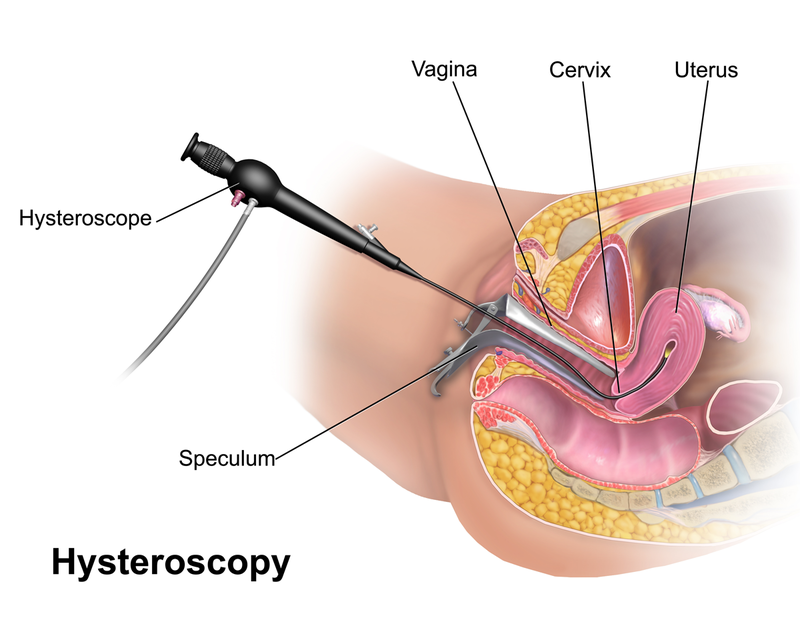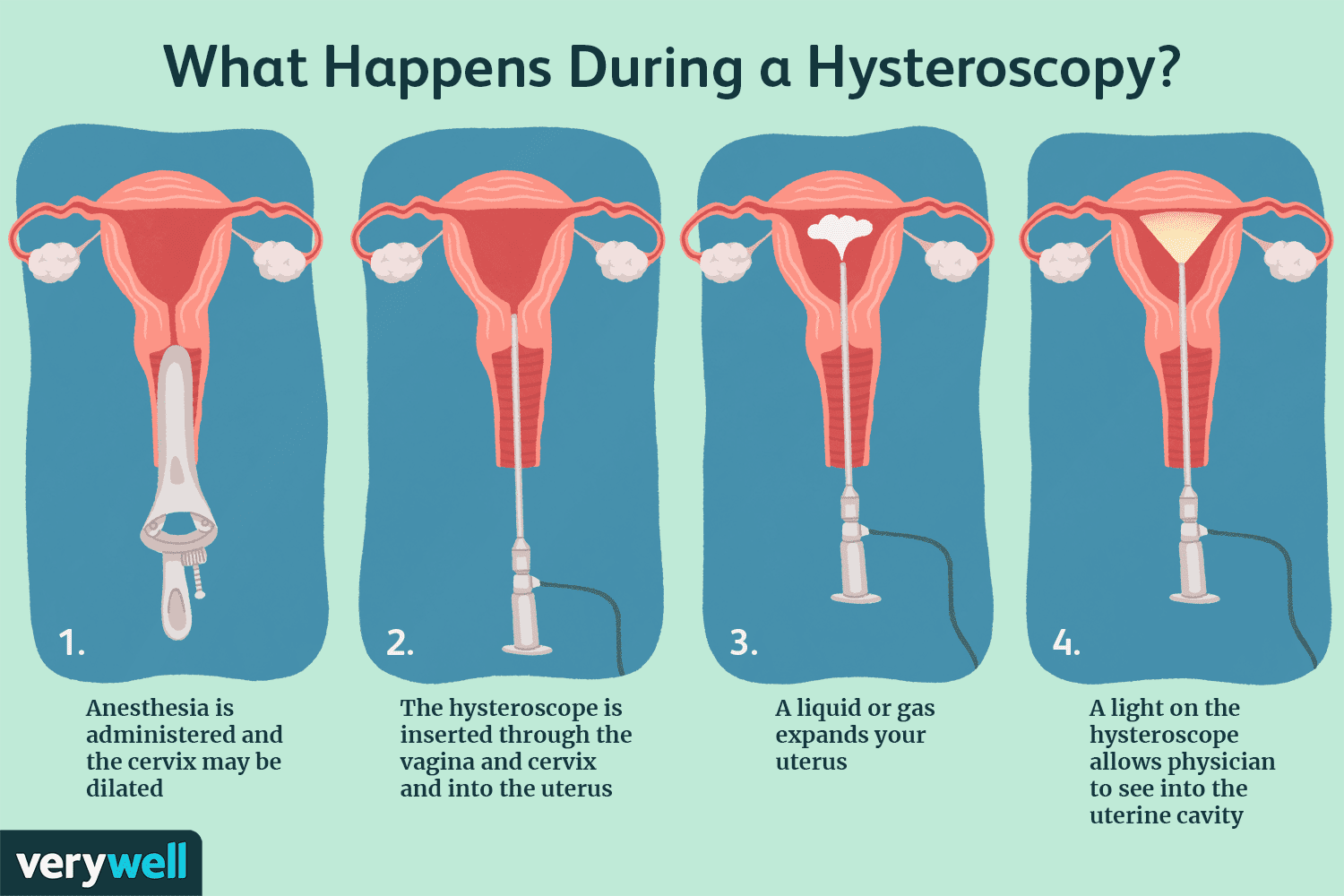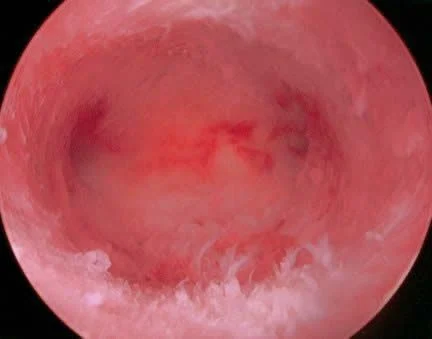Hysteroscopy
Hysteroscopy is a technique to visualize the inside of the uterine cavity. It is a minimal invasive approach to diagnose and treat many cervical and intra uterine pathologies.

How is it performed?
Hysteroscopy involves inserting a rigid or flexible hysteroscope through the cervical canal into the uterus and then using distending media to allow for complete visualization of the endometrial cavity.
Anatomical structure seen on hysteroscopy:
- Vagina: The muscular canal that connects the vulva to the cervix. It is an elastic passageway that varies in length and width. It functions as a source of sexual pleasure and route for fetal delivery. It also conducts the passage of sperm after intercourse and blood during menses.
- Cervix: The opening from the vagina to the uterus. It is usually 2-3 cm long. The cervix has a central opening called the cervical canal flanked by the external os anteriorly and the internal os posteriorly. Canal width varies throughout a female’s life, with maximal dilation to around 10cm during childbirth.
- Uterus corpus: The uterus lies midline within the pelvis between the bladder anteriorly and the rectum posteriorly. It usually lies in an anteverted and anteflexed position. Version refers to the position of the cervix relative to the vagina and flexion refers to the position of the fundus relative to the cervix. The fallopian tubes connect to the uterine corpus at the fundus bilaterally with tubal ostia able to be visualized on hysteroscopy.

In which cases hysteroscopy is needed?
- Endometrial polyp
- Abnormal uterine bleeding
- Post menopausal bleeding
- Submucosal fibroid of uterus
- Infertility
- Foreign body in uterus
- Cornual block leading to infertility
- Suspected intracavitary lesion
- Congenital uterine anomalies
- Endometrial hyperplasia (very thick endometrium)
We at AARYA WOMEN’S HOSPITAL use Storz 30 degree hysteroscope with isotonic media Normal Saline for safety of patients to avoid fluid overload.
What preparations need to be done by a patient?
After preoperative blood investigations and physician fitness , the patient is asked to come to the hospital with fasting of minimum 6-8 hours.
Hysteroscopy is a day care procedure done under short general Anesthesia, hence post procedure patients are discharged after 3 to 4 hours.
This is an actual image of the uterine cavity seen via hysteroscope.

Hysteroscopy can be both diagnostic and at the same time therapeutic as well.